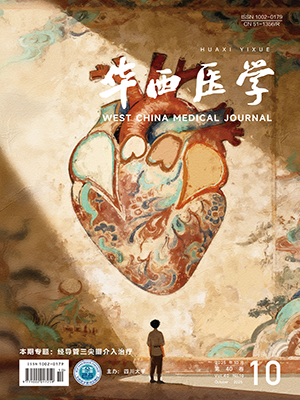| 1. |
Sarkar M, Laussen PC, Zurakowski D, et al. Hemodynamic responses to etomidate on induction of anesthesia in pediatric patients[J]. Anesth Analg, 2005, 101(3):645-650.
|
| 2. |
Fragen RJ, Fitzgerald PC. Effect of dexmedetomidine on the minimum alveolar concentration (MAC) of sevoflurane in adults age 55 to 70 years[J]. J Clin Anesth, 1999, 11(6):466-470.
|
| 3. |
Lin TF, Yeh Y, Lin FS, et a1. Effect of combining dexmedetomidine and morphine for intravenous patient-controlled analgesia[J]. Br J Anaesth, 2009, 102(1):117-122.
|
| 4. |
Völzke H, Lüdemann J, Robinson DM, et a1. The prevalence of undiagnosed thyroid disorders in a previously iodine-deficient area[J]. Thyroid, 2003, 13(8):803-810.
|
| 5. |
甘建辉, 史金麟, 胡万宁, 等. 右美托咪定在乳腺癌前哨淋巴结活检术中的临床应用[J]. 中国药房, 2013, 24(10):921-922.
|
| 6. |
闫怀军, 李岩. 依托咪酯对心血管系统功能的影响[J]. 中国药物与临床, 2010, 10(11):1255-1258.
|
| 7. |
Walls RM, Murphy MF. Clinical controversies:etomidate as an induction agent for endotracheal intubation in patients with sepsis:continue to use etomidate for intubation of patients with septic shock[J]. Ann Emerg Med, 2008, 52(1):13-14.
|
| 8. |
庄心良, 曾因明, 陈伯銮. 现代麻醉学[M]. 3版. 北京:人民卫生出版社, 2003:487-492.
|
| 9. |
Bhana N, Goa KL, Mcclellan KJ. Dexmedetomidine[J]. Drugs, 2000, 59(2):263-268.
|
| 10. |
Pandharipande PP, Pun BT, Herr DL, et al. Effect of sedation with dexmedetomidine vs lorazepam on acute brain dysfunction in mechanically ventilated patients:the MENDS randomized controlled trial[J]. JAMA, 2007, 298(22):2644-2653.
|
| 11. |
Turgut N, Turkmen A, Gökkaya S, et al. Dexmedetomidine-based versus fentanyl-based total intravenous anesthesia for lumbar laminectomy[J]. Minerva Anestesiol, 2008, 74(9):469-474.
|
| 12. |
Tufanogullari B, White PF, Peixoto MP, et al. Dexmedetomidine infusion during laparoscopic bariatric surgery:the effect on recovery outcome variables[J]. Anesth Analg, 2008, 106(6):1741-1748.
|
| 13. |
Ayoglu H, Yapakci O, Ugur MB, et al. Effectiveness of dexmedetomidine in reducing bleeding during septoplasty and tympanoplasty operations[J]. J Clin Anesth, 2008, 20(6):437-441.
|
| 14. |
方宁宁, 侯跃东, 于金贵. 不同剂量右美托咪啶对甲状腺手术患者全身麻醉拔管期心血管反应的影响[J]. 山东医药, 2012, 52(38):58-60.
|




